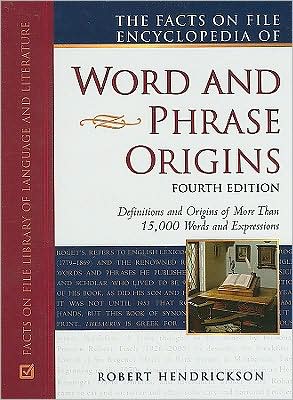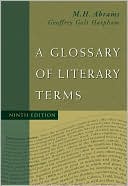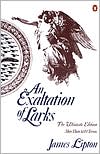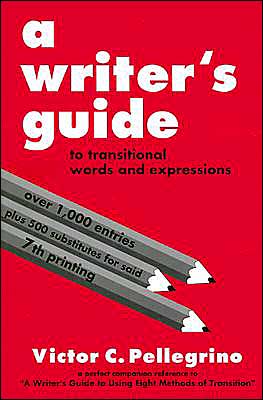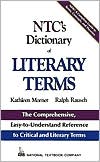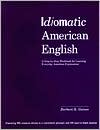Facts on File Encyclopedia of Word and Phrase Origins
The most comprehensive single-volume reference of its kind, The Facts On File Encyclopedia of Word and Phrase Origins, Fourth Edition has been completely updated and expanded and now contains definitions and origins of more than 15,000 words and expressions. This encyclopedia features anecdotes and information on the development of a wide range of words, including slang, proverbs, animal and plant names, place names, nicknames, historical expressions, foreign language expressions, and phrases...
Search in google:
In this entertaining compendium, Robert Hendrickson, author of numerous popular works on language and literature, traces the sometimes bizarre and always fascinating origins and developments of more than 9,000 words and phrases, including slang, proverbs, animal and plant names, place names, nicknames, historical expressions, foreign-language expressions, and more. The emphasis throughout is on words and expressions with origins that are not adequately explained; or not addressed at all; in standard dictionaries. This greatly expanded and revised version of the critically acclaimed 1987 original offers more than 2,000 new entries, including: Paparazzi: Director Frederico Fellini named a hyperactive photographer in his film La Dolce Vita Signore Paparazzo, after Italian slang for "mosquito". The popularity of Fellini's film led to the widespread use of the term paparazzi for relentless swarms of celebrity-chasing photographers. Quaaludes: The inventor of Quaaludes named his new drug after a contraction of quiet interludes; which he hoped it would induce. Toady: In the 17th century, conjurer's assistants would eat a toad, causing temporary illness that they would later "heal", thereby demonstrating their "miraculous" powers. The assistants came to be known as "toad-eaters," from which derives our modern insult toady. Library Journal This is a collection of stories, speculative though entertaining, behind 7500 English words and phrases, from A & P through babushka, Calvinism, Davy Crockett, eggs Benedict, fifty-four forty or fight, German measles, and many more to ZZZ. The stories are fascinating, but the book is marred by many misspellings, particularly in the quotations from German. Still, it will appeal to word buffs and hence should be of interest to public libraries. Scholars will probably continue to rely on the OED and other standard reference works. Catherine von Schon, SUNY at Stony Brook
\ Library JournalAn expansion of Hendrickson's (Dictionary of American Regionalisms) third edition, published in 2003, this updated version remains the most comprehensive compendium of word and phrase origins available. Now including 15,000 alphabetically organized, fully cross-referenced terms and idioms, this resource features cleverly written, paragraph-long entries filled with fascinating detail on the sociological evolution of colloquial expressions, proverbs, flora- and fauna-related terms, geographical and historical expressions, nicknames, and foreign words. Because the entries have both scholarly value and the capacity to entertain, the book is ideal for both linguists and lay readers. Recommended for English collections and public libraries.\ \ —Savannah Schroll Guz\ \ \ \ \ Library JournalThis is a collection of stories, speculative though entertaining, behind 7500 English words and phrases, from A & P through babushka, Calvinism, Davy Crockett, eggs Benedict, fifty-four forty or fight, German measles, and many more to ZZZ. The stories are fascinating, but the book is marred by many misspellings, particularly in the quotations from German. Still, it will appeal to word buffs and hence should be of interest to public libraries. Scholars will probably continue to rely on the OED and other standard reference works. Catherine von Schon, SUNY at Stony Brook\ \ \ Library JournalThis reference work on the history, origin, and current meaning of common words and phrases is organized from A to Z with short, definition-style entries. Approximately 3500 new entries have been added since the 2000 edition, bringing the total up to 12,500. Encompassing a wide range of people, places, and activities, the words and phrases included range from "the American dream," "Kodak," and "tadpole" to "Let's roll!"-the phrase made famous by Todd Beamer on 9/11. Each entry provides details on the etymological origin of a word or a phrase, retells stories about where it may first have been spoken, and explains its evolution over time. Hendrickson, who has authored a number of books for the publisher, rightly points out in the preface that this work is subjective, as much of its content is speculative or based on his opinion. While this makes the book more interesting, it also makes it less like a reference source, which should provide concrete facts. In addition, the author may have chosen to exclude appropriate words/phrases missing because he did not find their histories sufficiently dramatic. Similar to books like Why Do We Say It and any of the numerous dictionaries of word origins, this work will be most appreciated by historians, researchers, and crossword puzzle enthusiasts and is appropriate for all types of libraries.-Jaime Anderson, Cty. of Henrico P.L., VA Copyright 2004 Reed Business Information.\ \ \ \ \ School Library JournalGr 9 Up—This volume features more than 15,000 quirky words and expressions (2500 of them added since the 2004 edition) from the English/American vernacular. The text, arranged alphabetically, covers a broad range of slang terms, acronyms, coined phrases, literary references, and other dialectical gems. Written in an often-humorous tone, the brief entries consist of etymology and examples of usage culled from sources such as Shakespearean plays, films, or famous declarations. Terms range from classical nicknames (Heraclitus's "The Weeping Philosopher") to pop-culture references (the Seinfeld-ism "man hands"). Foreign expressions such as the British-born "do the needful" and the timely Iraqi "I throw a shoe at you!" are explained. Cross-references are provided, and the index includes listings of phrases and the subjects who uttered them. As the preface states, "No word or phrase has been eliminated because it might offend someone's sensibilities." Hendrickson admits that some origins presented are mere theories. Moreover, the lack of a pronunciation guide and the volume's anecdotal approach undermine its academic value. Still, the author provides an entertaining, informative look at the diversity of influences on the English language. Readers will find plenty to pique their interest in this strong secondary source.—Christina Connolly, Clark University, Worcester, MA\ \ \ \ \ BooknewsExpanded and revised to 15,000 entries<-->roughly triple the greatest number in any previous collection of its kind. An effort has been made to illustrate all the many ways words and phrases are born (words deriving from the numerous languages and dialects that have enriched English, echoic words, coined words, slang, words from the names of places, people, animals, occupations, leisure activities, mispronuciations, etc.) An index has been added to help readers find people, categories, information, and anecdotes difficult to locate when just alphabetized entries are available. Annotation c. by Book News, Inc., Portland, Or.\ \ \ \ \ Midwest Book Review...provides a winner to any who want a comprehensive coverage more in-depth than most casual lay treatments.\ \ \ \ \ ResearchPraise for the hardcover edition: "...language lovers will romp among its pages with as much excitement as a cat rolling in catnip."\ —Rettig on Reference\ \ \ \ \ William SafireA feast for phrase detectives...that will enliven debates and illuminate issues.\ —The New York Times Magazine\ \
